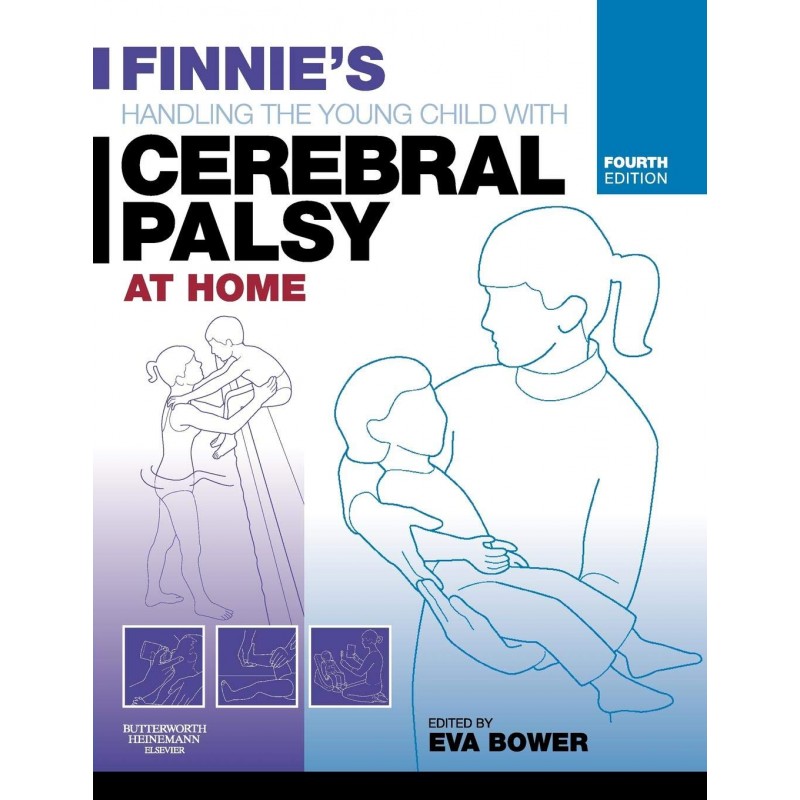- Reduced price

Order to parcel locker

easy pay


 Delivery policy
Delivery policy
Choose Paczkomat Inpost, Orlen Paczka, DHL, DPD or Poczta Polska. Click for more details
 Security policy
Security policy
Pay with a quick bank transfer, payment card or cash on delivery. Click for more details
 Return policy
Return policy
If you are a consumer, you can return the goods within 14 days. Click for more details
Over the years since the first edition of this book was written ideas on appropriate therapies have changed and developed. Similarly opinion on early intervention has changed and the method of delivery of service has in some places moved from centralisation to home-based or community provision. The emphasis of this new edition however remains on a holistic approach to the childs needs seeing the difficulties in relation to the overall development of the child as a unique person from childhood to adulthood.
Data sheet
Chapter 1 Communication between parents and professionals - Revised by E Bower
Chapter 2 Preparing for and coping with hospital appointments, assessments and admissions - C Fitzgerald & T Kerr Elliott
Chapter 3 Medical aspects of cerebral palsy: causes, associated problems and management - D Reddihough
Chapter 4 The role of different brain-imaging techniques in the diagnosis of cerebral palsy - I Krägeloh-Mann & M Wilke
Chapter 5 Epilepsy in cerebral palsy - R Guerrini & S Pellacani
Chapter 6 Parents problems - J Bavin & E Bower
Chapter 7 Learning and behaviour: the psychologists role - M Gardner
Chapter 8 Emotional health - C Laver-Bradbury
Chapter 9 Parents contribution to early learning: developing a dialogue using touch, sight, hearing and communication - Revised by E Bower
Chapter 10 Understanding movement, both typical and in the child with cerebral palsy - Revised by E Bower
Chapter 11 Handling - Revised by E Bower
Chapter 12 Sleeping - J Beaumont
Chapter 13 Feeding - H Cockerill
Chapter 14 Lifting and carrying - J Graham
Chapter 15 Toilet training - AJ Wright & R Kelly
Chapter 16 Bathing - Revised by E Bower
Chapter 17 Dressing - Revised by E Bower
Chapter 18 Communication - H Cockerill
Chapter 19 Hand function and fine motor activities - D Green
Chapter 20 Gross motor development in children with cerebral palsy: what do we know, and how may that knowledge help? - P Rosenbaum
Chapter 21 Chairs, pushchairs and car seats - Revised by E Bower
Chapter 22 Aids to mobility - Revised by E Bower
Chapter 23 Play - Revised by E Bower
Chapter 24 Leisure and fitness - Revised by E Bower
Chapter 25 Deformity: growth and the problems of getting taller - D Scrutton
Chapter 26 Orthoses and Children with cerebral palsy - C Morris
Chapter 27 Spasticity - DS Roy & JF McLaughlin
Chapter 28 Complementary and alternative medicine in cerebral palsy - M Bower
Appendix 1: An overview of the first five stages of sensorimotor development in a child with typical movement
Appendix 2: A typical childs gross motor development
Appendix 3: Validated measures of motor development and function which can be used for children with cerebral palsy
Appendix 4: Using the Gross Motor Function Classification System (GMFCS) for intervention planning in children 0-5 years
Appendix 5: Glossary of some of the terms used by therapists
Index
